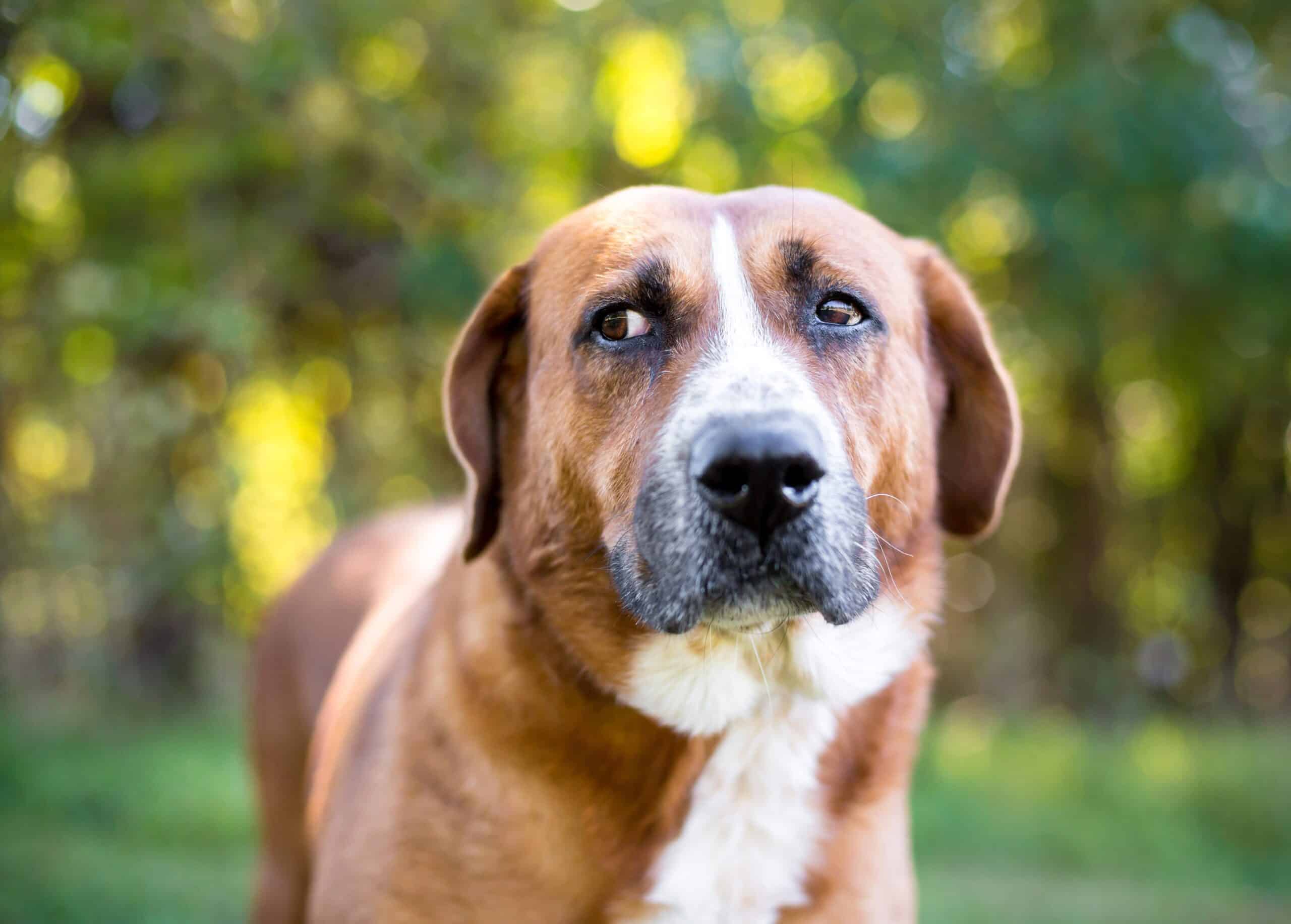We all dream of being accompanied by a calm, confident dog – free of any worries and stress. Unfortunately, the reality for many of our four-legged friends couldn’t be more different. Anxiety is a common symptom in our companion animals, and it can lead to anxiety in their human family if it goes unresolved.
Just as with humans, anxiety is a normal emotion for dogs to experience and display. Even the most confident dog may, from time-to-time, be cautious or reserved in a new situation. However, if your dog’s anxiety is becoming so serious that it is negatively impacting their quality of life, it may be time to take remedial action.
In this article, we’ll look at the signs of anxiety in dogs, and help you to understand the root causes. Then, we’ll explore some tips for helping to soothe your anxious pup.
Signs of anxiety in dogs
If you’ve ever had an anxious dog, you likely know the telltale signs that they are nervous or on edge. The common signs could be one (or a combination of some or all of them) of the following behaviors:
- Whining
- Whimpering
- Excessive barking
- Trembling
- Shaking
- Pacing
- Panting
- Loss of appetite
- Removing themselves from a situation
Why do dogs get anxious?
Dogs can become anxious for a number of reasons. Anxiety may be prevalent because of longstanding issues that have arisen as a result of the dog’s upbringing, learned behavior, or genetics. In other situations, a dog can become anxious because of loud noises (such as thunderstorms), interacting with new dogs or people, entering a new environment, or by other triggers.
The trick to managing anxiety (and managing is the key word, because in some situations, resolving their anxiety entirely may be impossible) is understanding the triggers that act as the catalyst. While there are many generalized tips that can help soothe anxiety, identifying the root cause will help you to put a tailored plan in place. The easiest way to do this is to observe your dog and spot the commonalities when their anxiety seems to build up.
Tips for soothing an anxious dog
There are several ways you can help to relieve your dog’s anxiety – if you have a strong and trusting relationship in place with your pup, just your mere presence may act as reassurance. Here are some other tips you can put into action.
1) Create a predictable schedule
Building a consistent schedule is one of the best ways to prevent your dog from becoming anxious. This creates habit and predictability for your dog.
There are several key events throughout the course of the day that you should take into account. Let them outside to use the bathroom when you wake up and before you go to bed at approximately the same time each day (if possible). Make sure you feed them the same number of meals with the same quantities each day. Have them settled down for the night so they grasp when bedtime is.
2) Give them exercise
Physical activity is not only beneficial for your dog’s physical health; it allows them to release pent-up energy that can build up if they don’t have that outlet. Exercise releases endorphins in dogs, which help to reduce stress and anxiety. A joint activity, such as throwing the ball or going for a walk, will also help to strengthen the bond between the two of you.
3) Offer mental stimulation
Activities don’t just have to be outdoorsy or physical – you can create indoor activities that provide your dog with mental stimulation. This reduces the potential for destructive behavior, which can often arise out of boredom or anxiety. Puzzle toys or the ‘find the treat’ game are simple ways to provide your dog with the enrichment they need.
4) Pet them
Sometimes, your dog just needs the reassurance of their human companion. Take a few moments to sit with them, gently petting them and offering praise. This touch may not seem like a lot, but it can help to calm your dog by confirming that you are there to support and care for them.
5) Groom your dog
By grooming your dog, you are not only keeping them looking well-kempt and neat – you’re also introducing an element of human touch. This can also help if your dog is scared or anxious about grooming equipment, such as clippers or brushes.
6) Desensitize your dog to anxiety-inducing stimuli
If your dog has a specific trigger for anxiety, you can work with them to try and make them feel more comfortable. For example, if your dog is always anxious around men, consider using male friends or family members in training sessions to reassure them that men are not to be feared. You can create positive associations with the stimuli to help alleviate your dog’s anxiety.
7) Make sure that you are calm
We have said it before, and we’ll say it again – dogs can sense our emotions. They know when we are stressed or anxious. This sometimes manifests itself in the dog displaying caring behavior towards us, but it can also have the opposite effect, and simply make them anxious, too. If your dog is showing signs of anxiety, try to keep your composure and remain calm when interacting with them, with others, and with the environment as a whole.
8) Discuss with your veterinarian
If your dog is suffering from chronic anxiety that affects their everyday life, it may be beneficial to speak with a veterinarian who may be able to help you by referring you to a veterinary behaviorist or providing your dog with prescription medication. A cautionary note – there are a lot of bold claims made by providers of ‘all natural’ remedies for dogs. Always discuss with your veterinarian before giving your dog any type of supplement or remedy.
In conclusion
At Greenside Canine, we have worked with our fair share of anxious dogs. While following many of the tips in this article can help, it is also important to note that every dog is an individual, and their own circumstances may override generalized advice. If you have an anxious dog and would like help from a professional dog trainer, our team at Greenside Canine based near Indianapolis is here to help! You can reach us at (317) 558-9145 or train@greensidecanine.com.

